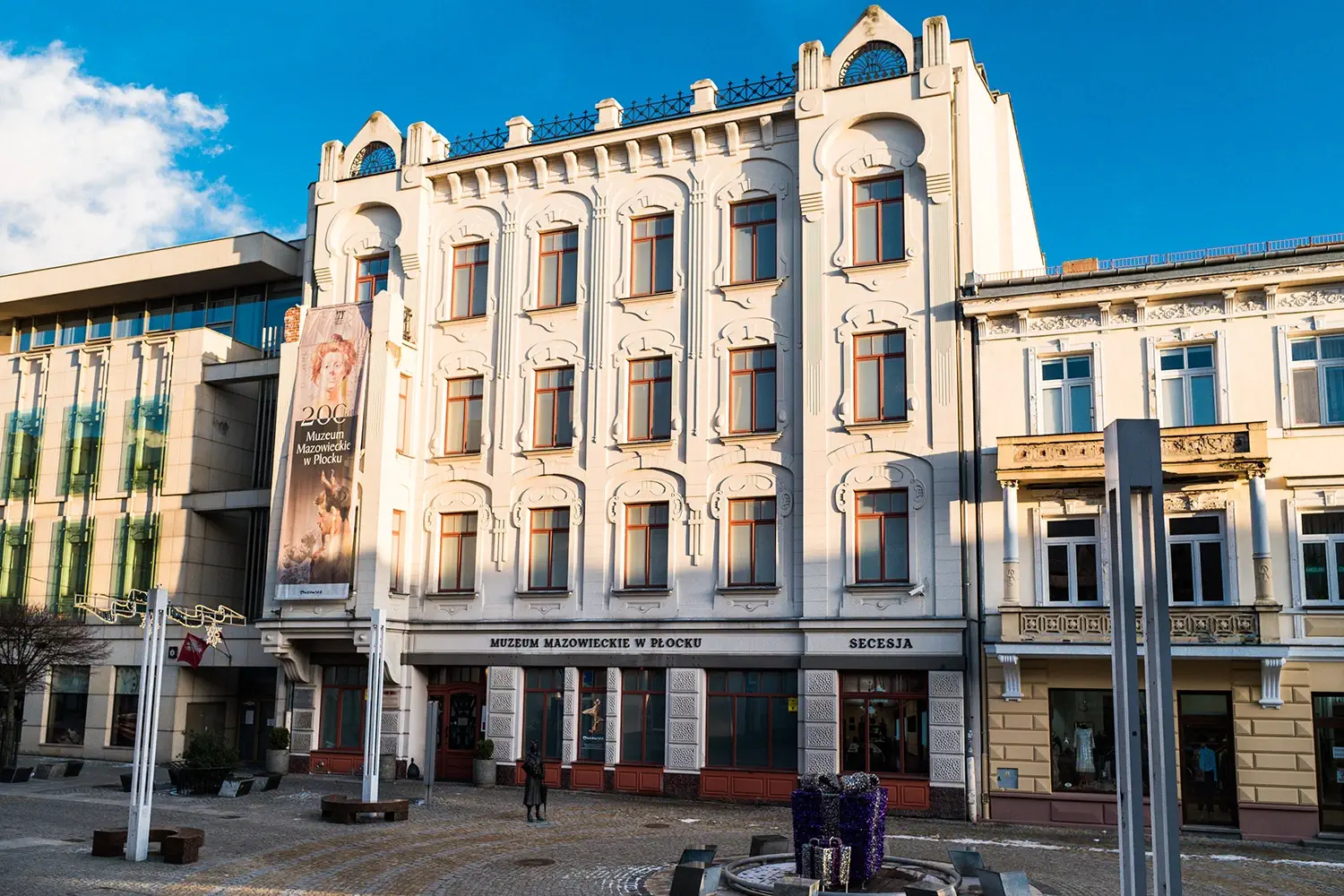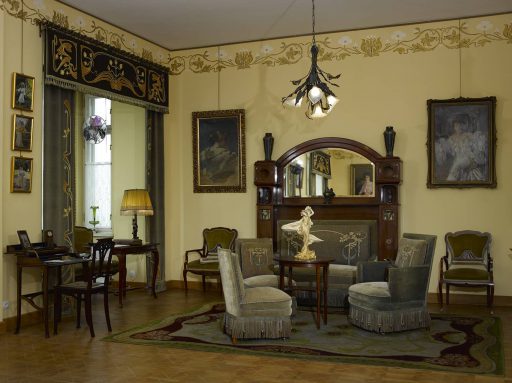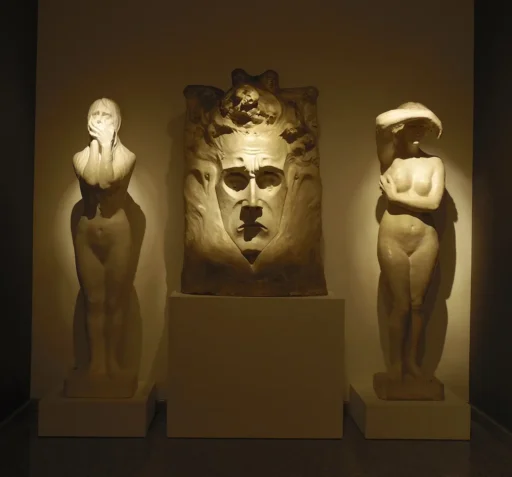Tenement of Art Nouveau
Interiors
1ST AND 2ND FLOOR.
Interior arrangement af a medium-wealthy middle-class house from the turn of the 20 century introduces on to the atmosphere of Art. Nouveau. The exhibits are furniture, placed according to rules predominant in the period as well as artistic craft: glassware, metal, ceramics. The specific atmosphere of the rooms is emphasized by fabrics: curtains, lambrequins, door-curtains often made of heavy, thick materials. Many of the exhibits originate from France Germany, Austria, Czech Republic, Belgium, Russia, indicating the European character of Art Nouveau. Inside the rooms, one can notice designs by prominent artists: H. van de Velde, E. Gallé, J. Hoffman, K. Laszczka, just to mention a few, as well as products of royal manufactures from Berlin, Miśnia and Copenhagen, valued companies like Czech Amphora, German Rosenthal, WMF, J. P. Kayser Sohn, Villeroy & Bosh, Austrian Thonet Brothers. Among the ones originated in Poland, one can find craft from the factories of Fraget, Plewkiewicz, Norblin. An additional quality is the Polish painting such artists as J. Malczewski, S. Wyspiański, J. Mehoffer, J. Chełmoński, W. Weiss and others. On each of the two floors, a number of rooms creating one apartment is presented. On the first floor we can visit a dining room, a living room, a study, a library and a bedroom. On the second – a dining room, a living room, o boudoir, a children’s room and a bedroom.
3RD and 4TH FLOOR
Art. Nouveau – glass and ceramics.
It is a presentation of a variety of forms, new techniques used by designers and manufactures. The exhibits originate from Czech, German, French, Silesian, and Austrian companies. The largest collection is comprised of the designs by E. Gallé. An important part of the collection is the iridescent Austro-Hungarian glassware as well as glass by R. Lalique and L. S. Tiffany. The ceramics room presents the products of European companies such as Rosenthal, KMP from Berlin, Amphora, KMP in Copenhagen as well as Polish ones (manufactures in Dębniki and in Pacyków), individual designs by F. Laszczka, J. Szczepkowski.
Young Poland – painting and sculpture.
The collection of paintings is a collection representative for the painting of the period and includes works of the most prominent artists such as J. Malczewski, W. Podkowiński, J. Mehoffer, A. Karpiński, W. Weiss, S. Czajkowski. Special attention should be paid to the Self-portrait by J. Malczewski and the sketch by W. Podkowińskifor the famous Frenzy of Exultations. Among the sculptures, one can notice the designs of the Frederic Chopin monument by W. Szymanowski; moreover, works by K. Laszczka, H. Kuna, S. Ostrowski are also displayed here.
Metal.
Most of the exhibits are silver and plated objects, among them a collection of products of Polish manufactures: J. Fraget, J. Plewkiewicz, the Norblin company, the Buch Brothers and T. Werner. Here we also present a bronzing company of the Łopieńscy Brothers, distinctive on the Polish market. As the foreign craft, most of it originates in Germany, especially in the famous WMF. Interesting are the forms of objects made of the alloys (P. Kayser Sohnand the vases designed by the French sculptor A. Moreau).
Medalic art.
The selection of objects points to the significant changes, which took place during the period of Art Nouveau. The small relief art became a subject of fascination of prominent sculptors, first of all – French. On the exhibition we can notice works of art from the most outstanding French, Polish and Viennese medal makers as well as German, Swiss, Italian, American and Argentinian medals. The collection in Płock is among the best ones in Poland.
Jewellery.
The style of Art Nouveau reflected itself also in the sophisticated forms of jewellery, the create which, diamonds, sapphires, rubies, chrysolites, opals and pearls were used. There were also a tendency to use cheaper materials, such as mother-of-pearl, tortoise-shell and ivory. Among the decoration techniques, enamelling was popular. On the exhibition, we can see products of Russian, French, Swiss, Polish and Austro-Hungarian companies.
8 Tumska Street, Płock
The exhibition can be visited from Tuesday to Sunday, in the summer from 10.00 a.m. to 5.00 p.m., in winter from 10.00 a.m. to 4.00 p.m. (last admission – 45 minutes before closing).
Ticket price – PLN 12 normal ticket, PLN 6 reduced ticket.
Permanent Exhibitions








